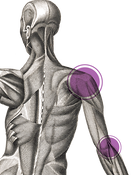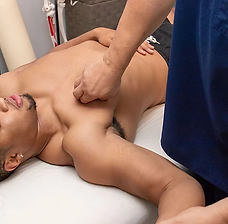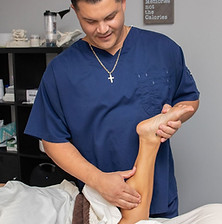
Six Degrees of Wellness has grown to be a community of friends who are all connected, in one way or another, in their journey to live healthier life. Whether it’s a desire to rid themselves from debilitating pain, recovering from an injury or surgery, striving for peak performance in their sports or seeking to optimize their health, the positive results received by those coming to Six Degrees inspires them to share their experiences with their families, friends and loved ones in need.
WAYS WE HAVE HELPED:
Injury Prevention
Myofascial Release Therapy
Cranial Decompression
Lymphodema Management
Sports Rehabilitation
Bemer Vascular Therapy
Post-Surgical Recovery
And MUCH MORE!
Neurosomatic Therapy (NMT) is an integrative form of manual therapy that identifies and corrects structural and biomechanical patterns in the body that are known to cause conditions such as chronic pain, muscular, skeletal and neurological dysfunction and certain associated diseases.
NMT uses careful analysis of dysfunctional postural and movement patterns to create a comprehensive therapy program that includes the five stages of rehabilitation:
-
Restore Proper Biomechanics
-
Increase Muscular Endurance
-
Eliminate Muscle Spasms
-
Increase Muscle Strength
-
Restore Flexibility
Additionally, the purpose of NMT is to not
only to eliminate the pain, but educate
the patient on ways to prevent
recurrence of the injury.
NMT is highly effective for clients who present with chronic pain and is often successful in reducing or eliminating even longstanding painful conditions. Some of the techniques can also be applied to acute injuries and for post-surgical care; many help to improve performance in sport or dance and to prevent injuries due to these activities.
In addition, NMT considers perpetuating factors that may be associated with the client’s complaints. For example, when a client presents with shoulder pain, the upper extremity protocol will be used as the primary examination. In addition to the muscles directly crossing the shoulder joint, muscles that attach the shoulder girdle to the torso would be included along with steps to help insure mobility of the scapula. Dysfunctions within the arm, forearm and hand often produce compensation patterns in shoulder movement, so examination of those regions should be included. Since innervation to the shoulder exits the spine at the cervical region, mobility and muscles of the neck will be considered; compression or entrapment of the nerves serving the shoulder should be ruled out.






